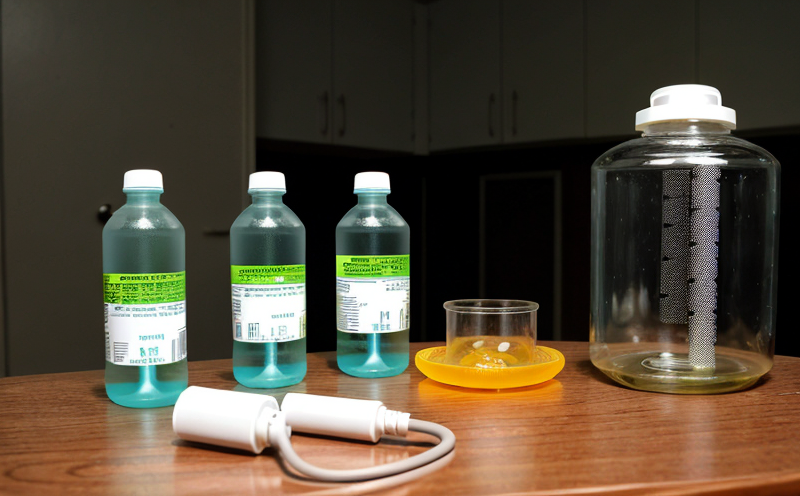ISO 18589-7 Thorium Determination Test in Water
The ISO 18589 series is a comprehensive standard that addresses the determination of radionuclides, including thorium, in water. Specifically, ISO 18589-7 focuses on the procedure for the measurement of thorium (Th) isotopes in natural and treated waters. This method employs gamma spectroscopy with high-purity germanium detectors to ensure accurate quantification.
The importance of this test lies in its ability to detect trace levels of radioactive materials, which can have significant implications for public health and environmental safety. Thorium, though not as immediately hazardous as other radionuclides like uranium or plutonium, is still a cause for concern due to its long half-life (1.91×1010 years) and potential pathways through the environment.
In natural waters, thorium can originate from various sources including geological formations, industrial discharges, or even historical mining activities. In treated water supplies, it is crucial to monitor for any contamination that might have slipped past treatment processes. Compliance with ISO 18589-7 ensures that water utilities and regulatory bodies can maintain a high standard of safety and quality.
The testing process begins with the collection of water samples from representative locations within the distribution network or source. Pre-treatment steps include filtering to remove suspended solids, followed by dilution if necessary to bring the sample concentration within the linear range of the analytical method. After preparation, the solution is placed in a suitable container for analysis.
The actual measurement uses gamma spectroscopy, where the detector records the energy spectrum emitted from the thorium present in the sample. The identification and quantification of thorium isotopes are based on their characteristic gamma-ray energies. The precision and accuracy of this method are enhanced by using high-purity germanium detectors that have excellent energy resolution.
The results obtained from ISO 18589-7 are reported in units such as picocuries per liter (pCi/L) or becquerels per liter (Bq/L). These values serve as critical indicators for assessing compliance with regulatory limits set by various jurisdictions. For instance, the U.S. Environmental Protection Agency has established guidelines for radionuclide concentrations in drinking water.
Compliance with ISO 18589-7 is essential not only for ensuring public health but also for maintaining trust among consumers and stakeholders in the water supply chain. Laboratories accredited to perform this test are recognized for their reliability, accuracy, and adherence to international standards.
Why It Matters
The determination of thorium in water is crucial for several reasons:
- To ensure compliance with regulatory limits set by various agencies worldwide.
- To protect public health and environmental safety from potential long-term effects of radioactive materials.
- To maintain the integrity of water treatment processes, ensuring that no harmful substances are present in the final product.
Thorium, although not as immediately hazardous as other radionuclides, accumulates over time and can pose risks if ingested or exposed. Therefore, regular monitoring using ISO 18589-7 is vital for water suppliers to maintain the highest standards of quality.
Eurolab Advantages
At Eurolab, our commitment to excellence in water and wastewater testing sets us apart as leaders in this field. Our ISO 18589-7 thorium determination service is backed by several key advantages:
- Expertise and Experience: Our team of experts possesses extensive knowledge and experience in performing this complex analysis.
- Accreditation: We are ISO/IEC 17025 accredited, ensuring that our methods meet the highest standards for accuracy and precision.
- Rapid Turnaround: Our efficient processes allow us to provide timely results, crucial for quick decision-making.
These advantages ensure that clients receive reliable, accurate data they can trust. Eurolab’s reputation in the industry is built on our unwavering commitment to quality and excellence.
Use Cases and Application Examples
- Water Treatment Plants: Monitoring thorium levels helps ensure that treatment processes are effective in removing all harmful substances.
- Environmental Agencies: Regular testing is essential for environmental protection, ensuring compliance with regulations.
- Health Authorities: Thorium detection contributes to public health by identifying potential hazards early.
In addition to these primary use cases, ISO 18589-7 can be applied in various research and development scenarios where understanding the presence of thorium is crucial. For instance, in studies aimed at improving water treatment technologies or evaluating historical contamination sources.





